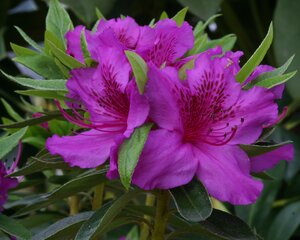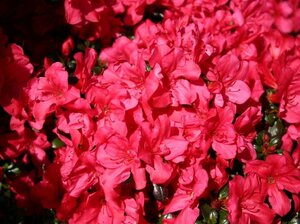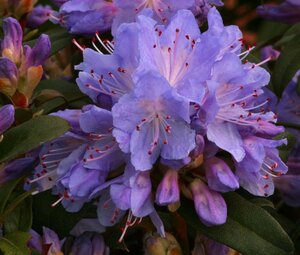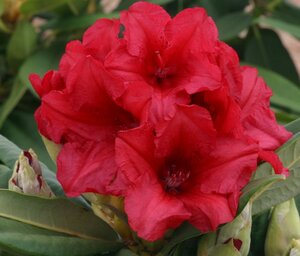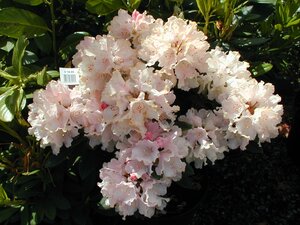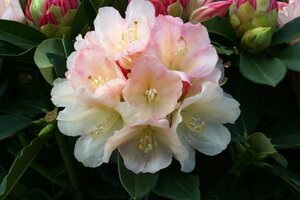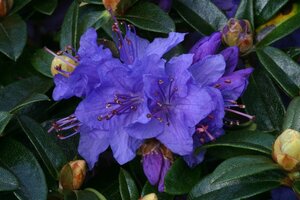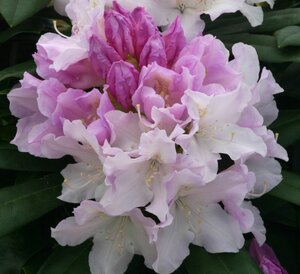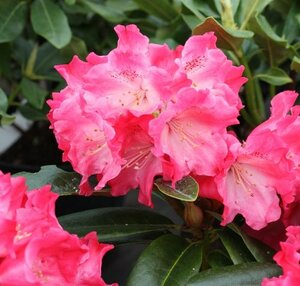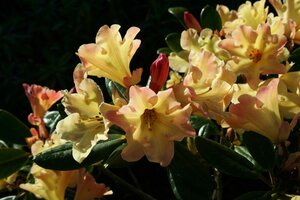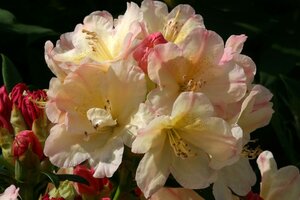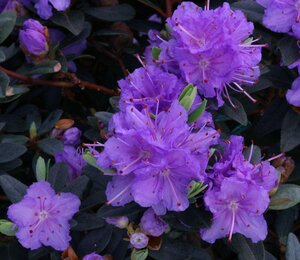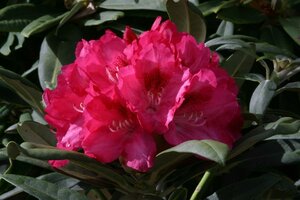Rhododendrons and Azaleas
Rhododendrons and Azaleas are both part of the same plant family, Ericaceae, and share many similarities, but they have a few distinct differences. Rhododendrons tend to be larger shrubs with larger, leathery leaves and flowers that grow in dense clusters. Azaleas, on the other hand, usually have smaller leaves and more delicate, often funnel-shaped flowers that bloom in a wider variety of colours. Both plants thrive in acidic, well-drained soil and are prized for their vibrant, showy blooms in spring, making them popular choices for gardens and landscapes. While they are closely related, Azaleas often have a more compact growth habit compared to the more sprawling Rhododendrons.
At Thompson's we get all of our Rhododendrons & Azalea from Osberton Nurseries. Based in Nottingham, and with over 20 years experience, we think they are the best grower of Rhododendron & Azalea in the country.
Please note Rhododendron's & Azalea are typically available towards the start of the year/early Spring
Filter products
Choosing the right spot for you rhododendrons
Planting rhododendrons and azaleas can be a rewarding addition to your garden, thanks to their vibrant and showy blooms. To give them the best start, it’s important to choose the right location. Both plants generally prefer partial shade, although some varieties can tolerate full sun—just be sure the soil retains enough moisture in sunnier spots. The soil itself should be acidic, ideally with a pH between 4.5 and 6.0, and well-draining. A loamy or sandy soil is ideal for keeping their roots healthy and preventing rot. Finally, give your plants room to grow—space them far enough apart to allow air circulation and avoid overcrowding as they mature. With the right conditions, your rhododendrons and azaleas will thrive and bring long-lasting beauty to your garden.
Preparing the soil for your rhododendron
- Test the Soil: Before planting, check your soil's pH level using a test kit. If the soil is too alkaline, you can amend it with sulfur or peat moss to lower the pH.
- Clear the Area: Remove any weeds, grass, or old plants from the area where you plan to plant. Rhododendrons and azaleas do not like competition from other plants.
How to plant rhododendrons
- Digging the Hole:
- Dig a hole about 2-3 times the size of the root ball.
- The hole should be no deeper than the height of the root ball. Rhododendrons and azaleas prefer to be planted slightly above ground level, with the root ball sitting a little higher than the surrounding soil to ensure proper drainage.
- Amend the Soil: Mix the soil you removed from the hole with compost or peat moss to improve its texture and acidity.
- Planting the Shrub:
- Place the shrub into the hole, ensuring the top of the root ball is level with the surrounding soil.
- Gently backfill the hole with the amended soil. Avoid packing the soil too tightly.
- Watering: Water thoroughly right after planting to settle the soil around the roots.
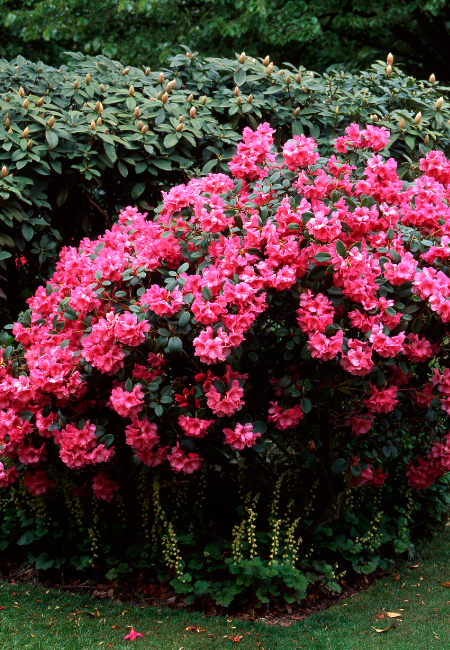
5 care tips for rhododendrons
- Mulching: Apply a 2-3 inch layer of mulch (such as pine bark or pine needles) around the base of the plant. Mulch helps retain moisture, suppress weeds, and maintain soil acidity.
- Watering: Rhododendrons and azaleas need consistent moisture, especially during dry periods. Water deeply to encourage deep root growth, but avoid letting them sit in waterlogged soil.
- Fertilizing: In early spring, feed with a fertilizer designed for acid-loving plants. Avoid fertilizing in late fall, as this can encourage late growth that may be damaged by winter.
- Pruning: Lightly prune after flowering to remove any dead or damaged branches. Avoid heavy pruning, as it may reduce next year’s bloom.
- Pest and Disease Control: Keep an eye out for pests like aphids or leafhoppers and diseases like powdery mildew or root rot. Ensure good air circulation around the plants and remove any affected parts as necessary.
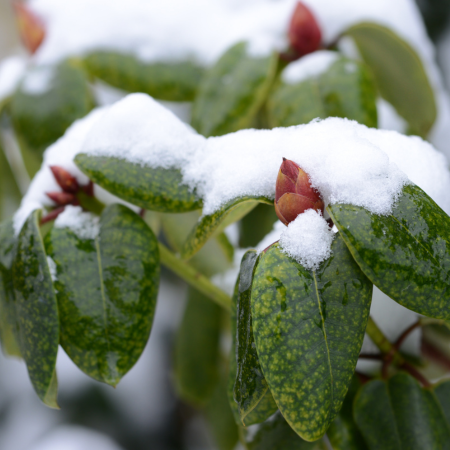
Rhododendron winter care
Rhododendrons and azaleas are hardy plants, but they can still suffer from frost damage, especially in colder regions. To protect them during the winter months, it’s a good idea to cover vulnerable plants with horticultural fleece or burlapwhen severe frost is forecast. This helps shield the foliage and flower buds from cold winds and freezing temperatures. It’s also important to maintain consistent soil moisture—while these plants don’t like waterlogged conditions, their roots can dry out if the soil becomes too dry in winter, particularly during periods of frost when water is less available. Applying a layer of organic mulch, such as bark or pine needles, around the base of the plant can help retain moisture and insulate the roots against temperature fluctuations. With a little preparation, your rhododendrons and azaleas will emerge in spring healthy and ready to bloom.
Buy rhododendrons at Thompson's
Looking to add a splash of colour to your garden? Visit your local Thompson’s branch to explore our stunning selection of rhododendrons and azaleas. Whether you’re after compact varieties for containers or larger specimens for borders and woodland-style planting, we have a wide range to suit every garden style and size. Our plants are carefully selected for quality and hardiness, ensuring you get the best results at home. Plus, our knowledgeable staff are always on hand to offer expert advice on soil preparation, planting, and care—so you can enjoy healthy, vibrant blooms year after year. Discover the beauty of rhododendrons and azaleas at Thompson’s today.


